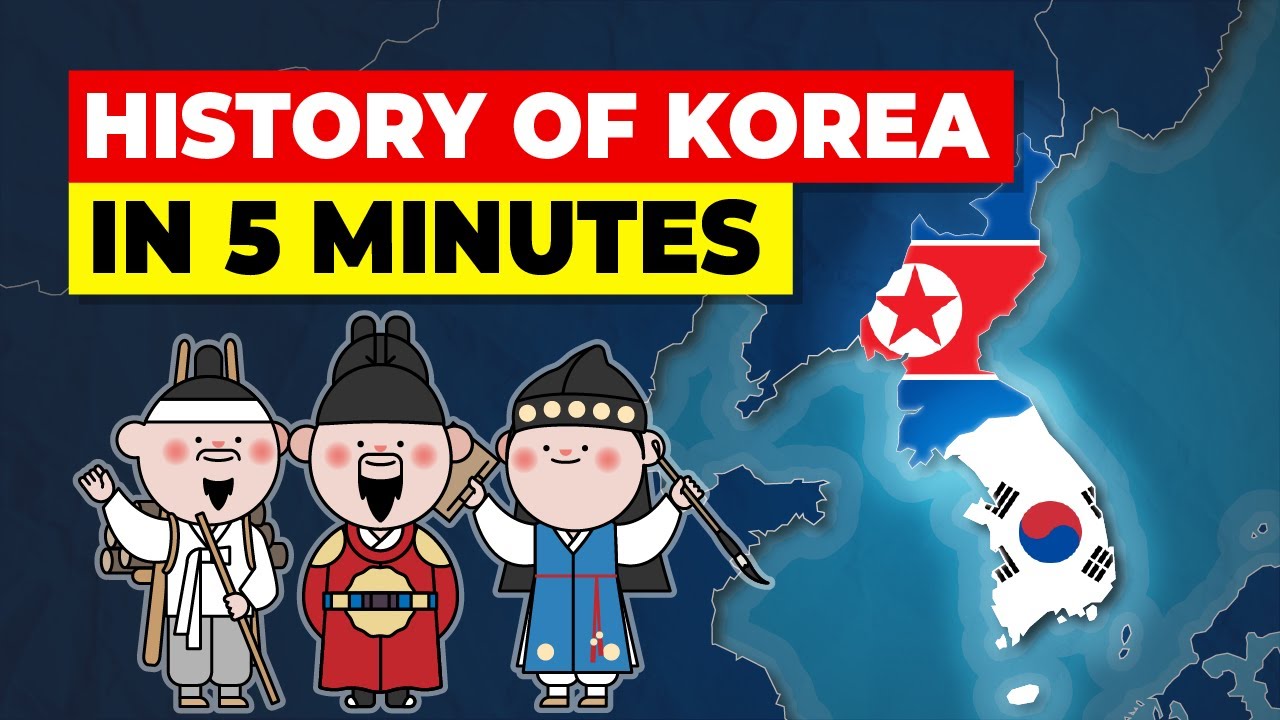Why Did Korea Split in to North and South?
Summary
TLDRThis video explores the historical roots of the division between North and South Korea, highlighting the influence of external powers like the US and Soviet Union post-WWII. It delves into the initial unity under the Silla Dynasty, the subsequent Japanese rule, and the arbitrary split along the 38th Parallel. The script also touches on the Korean War and the establishment of the demilitarized zone, setting the stage for the ongoing ideological conflict and the potential for reunification.
Takeaways
- 🌎 Relations between North and South Korea have been historically tense.
- 🤝 The meeting between Kim Jong Un and Moon Jae-In led to a temporary shift in South Korean public opinion about the North Korean leader.
- 🏰 The division of Korea began after World War II, influenced by the geopolitical interests of the USA and the Soviet Union.
- 📜 The 38th Parallel was chosen as the dividing line without Korean input, leading to the split of the country.
- 👑 Both North and South Korea were influenced by their respective superpower patrons, with Syngman Rhee in the South and Kim Il-Sung in the North.
- 🔥 The Korean War (1950-1953) was an attempt by North Korea to unify the peninsula under communist rule but resulted in a stalemate.
- 💔 Approximately 3 million people died during the Korean War, with the division of Korea remaining unchanged.
- 🏡 The Demilitarized Zone (DMZ) was established to prevent further conflict and to control the movement of people between the two Koreas.
- 🌐 North Korea adopted a strict communist system, while South Korea embraced capitalism and democratic values.
- 🇺🇸 The United States maintains a military presence in South Korea, with approximately 28,000 troops stationed there.
Q & A
What was the initial perception of North Korea's leader Kim Jong Un by South Koreans and the world?
-Initially, most South Koreans and the world saw Kim Jong Un as an evil dictator.
How did the perception of Kim Jong Un change after his meeting with South Korea's president?
-After the meeting with Moon Jae-In, some South Koreans referred to Kim Jong Un as a cute teddy bear.
What is the historical relationship between the USA and North Korea?
-The USA and North Korea have had a tense relationship, with the North not being in the USA's good books.
How did the division of Korea begin?
-The division of Korea began after World War II, when the country was split into two zones of occupation by the US and the Soviet Union.
What was the role of the First Sino-Japanese War in shaping Korea's history?
-The First Sino-Japanese War led to Japan becoming a powerful empire and eventually annexing the Korean Peninsula in 1910.
What was the significance of the Treaty of Peace, Amity, Commerce and Navigation between Korea and the US?
-The treaty opened up trade and modern industries in Korea, but it also led to China trying to reform and run the country.
Who were Dean Rusk and Charles Bonesteel, and what was their role in Korea's division?
-Dean Rusk and Charles Bonesteel were Americans responsible for making decisions in US-occupied territories in East Asia, and they came up with the idea of splitting Korea along the 38th Parallel.
Why did the US and the Soviet Union decide to split Korea into two parts?
-The US and the Soviet Union split Korea to administer the country after Japan's defeat in World War II, without Korea having a say in the matter.
How did the US and the Soviet Union's differing ideologies affect the governance of North and South Korea?
-The US wanted democratic governments in both North and South Korea, while the Soviets wanted the entire peninsula to be communist, leading to a divide between the two.
What was the outcome of the Korean War?
-The Korean War resulted in 3 million deaths and ultimately did not change the division of Korea at the 38th Parallel.
What is the demilitarized zone, and why was it established?
-The demilitarized zone was established to prevent further conflict and bloodshed between North and South Korea, and to prevent people from reuniting or escaping.
Outlines

This section is available to paid users only. Please upgrade to access this part.
Upgrade NowMindmap

This section is available to paid users only. Please upgrade to access this part.
Upgrade NowKeywords

This section is available to paid users only. Please upgrade to access this part.
Upgrade NowHighlights

This section is available to paid users only. Please upgrade to access this part.
Upgrade NowTranscripts

This section is available to paid users only. Please upgrade to access this part.
Upgrade NowBrowse More Related Video
5.0 / 5 (0 votes)





